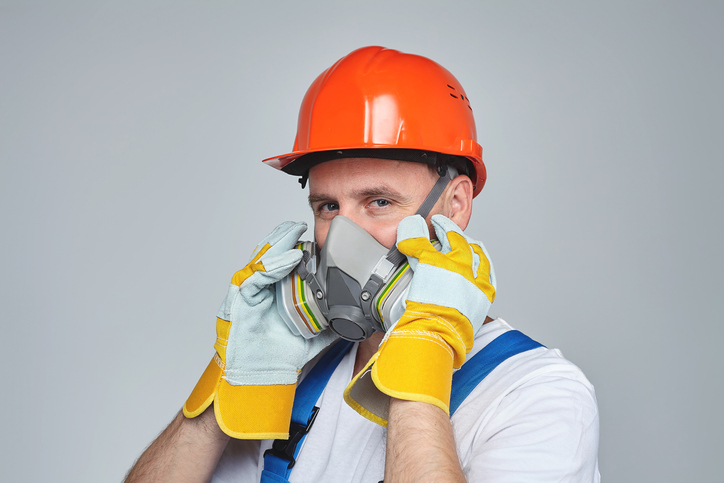Managing the health risks of silica dust

By QBE Senior Risk Manager Nick Fox
Exposure to silica dust can cause serious, irreversible long term health effects.
Every year thousands of construction workers suffer from respiratory problems and lung disease as a result of breathing in silica dust.
In their 2021 health and safety at work statistics, the UK Health and Safety Executive (HSE) reported:
13,000 deaths each year are estimated to be linked to past exposure to dust and chemicals at work.Occupational lung diseases account for 12,000 of these deaths.On average during the past three years, there have been an estimated 17,000 new cases of respiratory problems caused or made worse by work per year.
The issue is so concerning that the HSE has a ‘Dust Kills’ campaign focused on raising awareness of respiratory risks and occupational lung disease.
What is silica?
Silica is a naturally occurring substance found in stone, rocks, sand and clay, and a major component of many construction materials including bricks, tiles, concrete and some plastic composites.
Crystalline silica is at its most toxic when it is freshly fractured through processes such as cutting, drilling or polishing. During these and other processes where high energy is applied to the crystalline silica, a very fine dust is released which can be breathed in. This dust is known as Respirable Crystalline Silica (RCS), and it is so fine that once breathed in, it can reach the deep lung and remain there.
Because RCS particles are not visible in normal light, high concentrations can be inhaled without the worker being aware of it.
Exposure to RCS over an extended period can cause serious, irreversible long-term health effects, beginning with fibrosis (hardening or scarring) of the lung tissue, with a consequent loss of lung function. Sufferers are likely to have severe shortness of breath and may find it difficult or impossible to walk even short distances or upstairs. The effect continues to develop after exposure has stopped and is irreversible, with the effect that sufferers usually become house- or bed-bound and often die prematurely due to heart failure.
Who is at most at risk?
There are several construction workplace activities where exposure to RCS can pose a risk. These include:
Breaking, crushing, grinding or milling silica-containing material such as concrete, aggregate or mortarDrilling, cutting, chiselling or sanding silica-containing materialHandling, mixing or shovelling dry materials that contain silicaWorking with cementMoving earth, such as excavating, mining, quarrying or tunnellingAbrasive blasting or sandblasting
How can employers manage the risk?
RCS is process-generated i.e. it only occurs as a result of applying a high energy process (such as cutting) to a crystalline silica-containing material. However, it is still classified as a carcinogen, and exposure to it should therefore be controlled in a manner similar to any other hazardous material with an associated serious ill health effect.
The Control of Substances Hazardous to Health (COSHH) Regulations, 2002 (as amended) and associated Approved Code of Practice provide the legal framework for managing the health risks associated with work-related exposure to RCS.
Prior to implementing these, however, the employer must consider whether they can avoid exposure and prevent the release of RCS in the first place. Matters to consider include:
The removal or substitution of materials containing silica from the work process. It may be possible to use a different material, for example substituting olivine or another safer material for silica sand in abrasive blasting.Taking account of RCS dust control at the design stage of a project, for example by planning in recesses for services such as water, gas and electrics so there is no requirement to cut or drill masonry later in the project.If it is not possible to protect operatives from exposure to RCS silica at the design stage of a project or by changing processes or materials, then employers must assess and control the exposure risks.
Download our free risk insight
To help businesses be more prepared, we’ve produced a free risk insight guide with information on:
Risk assessmentControl measuresPersonal protective equipment (PPE)Respiratory protective equipment (RPE)Health surveillance and exposure monitoringInformation, instruction and training
Free Download – Risk Insight: Respirable Crystalline Silica
Risk management services for QBE customers
QBE helps businesses build resilience through risk management and insurance.
Depending upon the size and complexity of the business needs, QBE customers can access a wide range of risk management services, self-assessment questionnaires and risk management toolkits which are focused on the key causes of claims, and on generating action plans for improved outcomes – including protecting employees, reducing risk and making claims less likely. You can find out more about how QBE helps businesses to manage risk here.
Downloads





